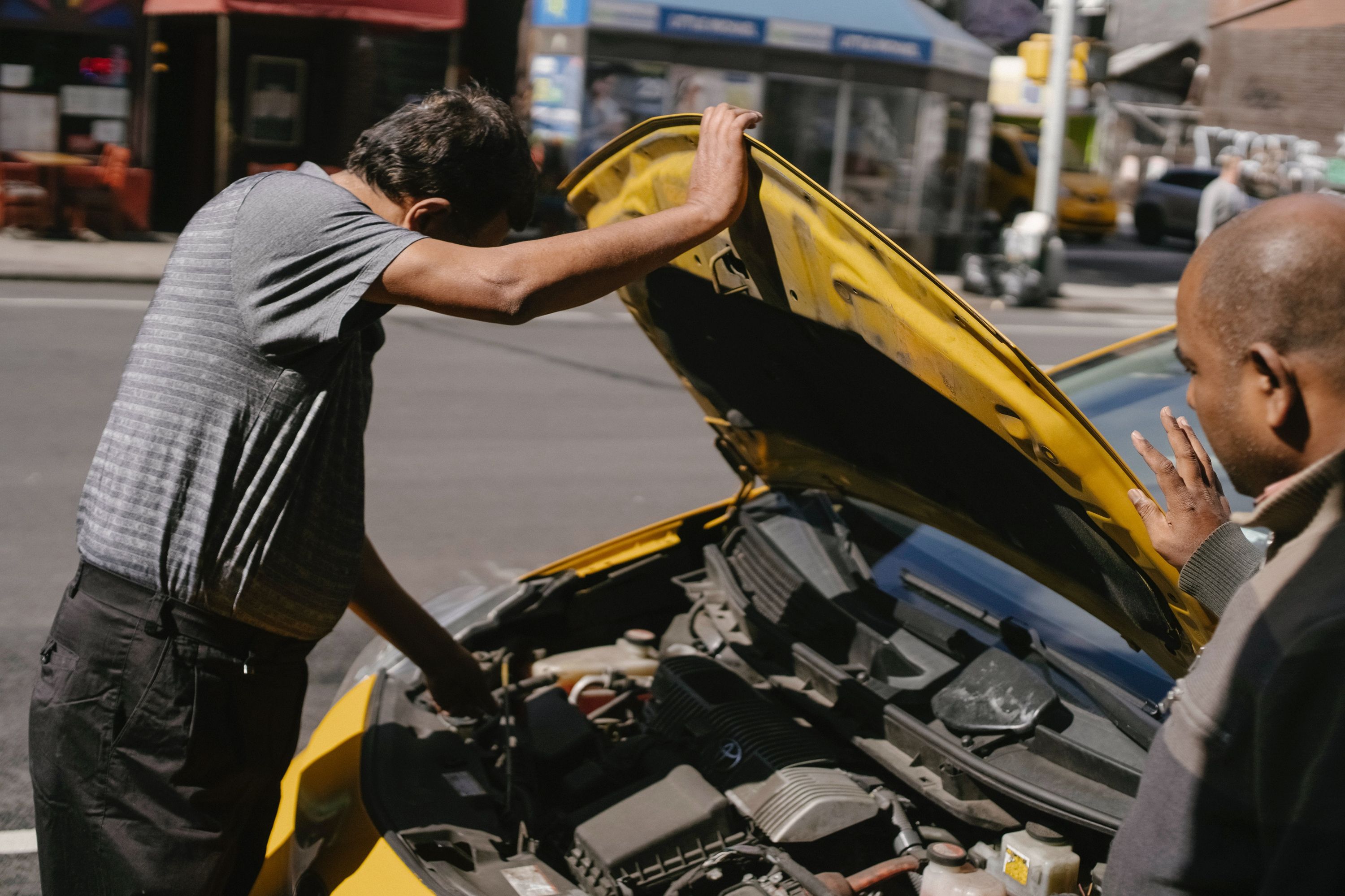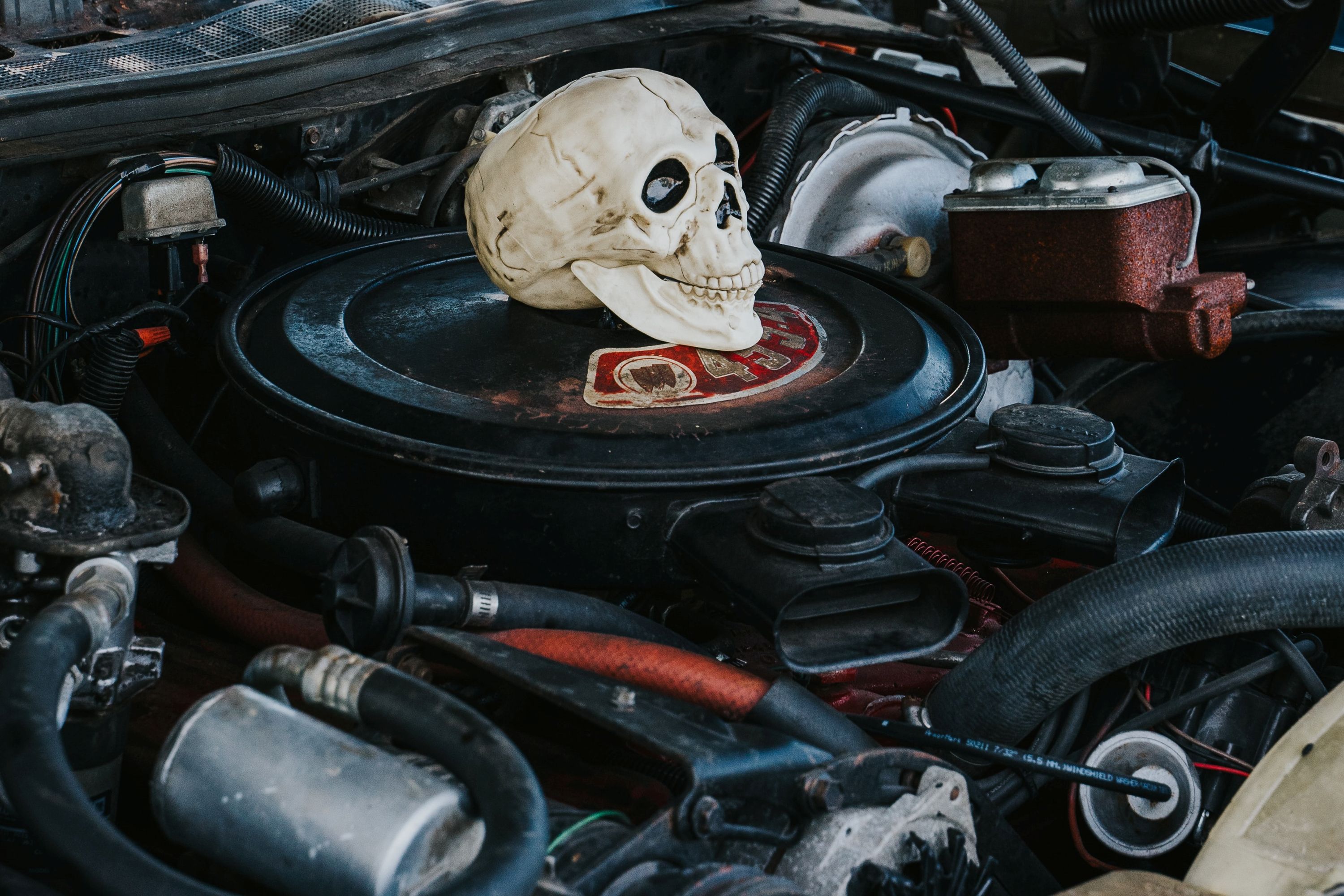
The red warning light comes on, there's a warning tone, and you realize with horror that your car engine is overheating. And then all the questions flood your mind: Is it safe to stop? Can I continue driving? Why did this happen? Is the engine damaged? How much is this going to cost? As always, prevention is better than cure and there are several things you can do to minimize the likelihood of your engine overheating. However, if it does happen, there are certain things you can do to avoid or minimize damage if you act in time. It doesn't matter what type of vehicle people drive - sedans, SUVs, trucks, or station wagons - if it runs on gas or diesel, it has an engine with a cooling system that can fail. Many people get stranded next to the road every day in the USA due to overheating problems - our handy guide will help you to avoid becoming a statistic.
Reasons for Overheating Car Engines
The cooling system in most modern cars works by circulating coolant through the engine block, where it collects heat, to the thin tubes of the radiator, where the heat is dissipated, aided by cool air flowing in through the front grille. Once the fluid is at a lower temperature, it is recirculated through the engine again. A water pump keeps the liquid moving continuously. Overheating can be caused by many things, with one of the most common being a lack of coolant. A loss of coolant means there is too little of it left to dissipate the heat and/or circulate properly, which can also lead to overheating. This could happen due to a burst water hose or leaking radiator, where water and coolant escape the system. Bad radiator-hose symptoms include a collapsed, broken, or swollen hose. In any of these cases, it should be replaced at once.
Additionally, a dodgy thermostat, bad radiator, or faulty water pump might be restricting coolant flow, or allowing only partial coolant flow. The capacity of the cooling system to effectively lower the temperature might even be exceeded, for example, due to a combination of extremely hot temperatures, hard driving, or heavy towing. A well-maintained engine with enough coolant that is being driven within its abilities should never overheat.
What Happens When My Car Overheats?
Engines have an optimal operating temperature that needs to be maintained by the cooling system. At start up, especially on cold days, some engines may need to warm up a little, but with an effective cooling system, should remain steady. The radiator fan and liquid cooling system ensure that, when under strain, the temperature doesn't climb too high. If the components of the cooling system are working at maximum capacity for extended periods of time, it may struggle to keep up. When it can no longer keep up, the engine will become hotter until it overheats - this implies that, firstly, the coolant overheats or boils, and secondly, the metal of the engine itself gets too hot and can actually meld together. As the coolant boils and releases vapor, it expands and, with nowhere to go, can cause serious damage to your engine.
How do You Diagnose an Overheated Engine?
You may have seen the temperature gauge edge upwards or heard the warning tone; left unchecked, you will experience the following signs of your car engine overheating:
- Warning light/tone
- Steam or vapor from beneath the hood
- Ticking or thumping noises
- 'Hot' smell
- Coolant/water leaking onto the ground
- Hood that is too hot to the touch
What Should You Do if Your Car Engine Has Overheated?
- Pull over as soon as possible and pop the hood
- Call roadside assistance and/or a trusted qualified mechanic
- Let the engine cool down for at least half an hour before touching anything
- Don't continue driving the car if you don't know the extent of the damage
- After at least 30 minutes, carefully and gradually open the radiator cap to release some pressure - watch out for scalding steam!
- Top up with water/coolant if needed, and replace the cap after a few minutes
- Check for leaks before driving off, and keep an eye on the temperature gauge as you go
While a simple fix may be simply topping up with a water/coolant mixture, it may be something a little more serious. So, how do you fix a car that overheats if you don't know where the problem lies? You might need a professional for that - a competent mechanic will be able to make a diagnosis and suggest an appropriate fix.
My Car is Overheating While Driving - Should I Carry on?
If your engine's temperature gauge is running slightly above normal but is not yet in the red zone, you might be able to nurse the car home without the engine completely overheating, but this is not recommended. Turn the interior heater to its maximum setting to help dissipate engine heat, avoid strong acceleration, coast as much as you can, and note if the temperature remains constant - you may decide to take the risk of getting home, or at least to a filling station, like this, but it's still a big risk. Driving with an engine that is already too hot is dangerous, and swift action is required to prevent damage.
What Damage is Caused by an Overheated Engine?
Left unchecked, overheating will wreck an engine. As it gets hotter and hotter, the head gasket on the car may blow, it might start to leak oil, other under-hood components may become damaged, the cylinder head could warp and crack, the engine block could crack, and the engine could seize up completely. In some cases, albeit quite rare, an unlucky combination of design flaws, an overheated car engine, and internal fluid spillage has been known to cause this worst-case scenario: your car could literally erupt in flames.
Can My Car’s Healthy Engine Overheat?
What about a perfectly well-maintained car overheating while driving? It might simply be working too hard. Here are some suggestions to prevent and mitigate overheating:
- Towing: Don't tow in excess of your vehicle's tow rating. Be aware of what your car is capable of, and don't overload it.
- Strain: Don't put unnecessary stress on the engine, especially in extremely hot weather - it's not worth wrecking the motor just for a smokey burnout.
- Small stretches: If your car is showing signs of a potential overheating problem and you cannot stop or seek assistance, drive for short stretches, turn the car off and let it cool for ten or twenty minutes, and repeat.
- Avoid obstructions: Don't impair your car's cooling capacity by mounting numberplates, spotlights, and the like in a way that they might impede airflow into the radiator. This is especially important in vehicles that place high demands on their cooling systems. Examples include heavy-duty trucks that can haul huge loads, such as the Chevrolet Silverado HD, and high-performing sports cars, such as the Porsche 911 Turbo S.
How Much Does it Cost to Fix an Overheated Car?
If you notice that the temperature gauge is creeping beyond its normal resting position and you switch off the engine before it gets to the red zone, chances are that your engine may suffer no damage at all. Hunt down the problem quickly while it's minor and you may be pleasantly surprised to find that it is not expensive to fix an overheating car. You could be well on your way in no time after minor repairs. The higher the temperature gets, the more damage is inflicted and the more the repairs will cost. A gasket job may cost a few thousand dollars, but a totally wrecked engine may cost tens of thousands of dollars to replace. A thermostat is cheap and it typically costs between $100 and $300 to replace a faulty one. If you feel unsure about how to fix a car when it overheats, get the help of a professional, just don't leave the problem unattended!
Prevention is Better Than Cure
Most car engines' cooling-system problems can be avoided through preventative maintenance. Have your vehicle serviced regularly, have the cooling system inspected frequently, and always make sure that you replace tired pipes, attend to leaks in short order, and always ensure that the prescribed mixture of anti-freeze and water is used. Check your coolant level regularly on a cold engine, first thing in the morning, and keep an eye out for coolant leaks on the floor. There may be so many reasons why a car engine is overheating, so stay a few steps ahead by pre-empting them. One thing is for certain, car-engine overheating problems don't just go away when you ignore them. The sooner you find the solutions, the less damage you will suffer.
Conclusion
Nobody wants to deal with an overheating incident, so it is best to do all the necessary preventative maintenance to avoid it in the first place. It's strongly recommended that you have a professional mechanic once-over your car regularly to assess the integrity of your radiator, cooling hoses, water pump, and thermostat, and replace anything that does not pass the inspection. If you are in the unfortunate situation where you have to deal with an overheating engine, pull off the road immediately and switch off to prevent further damage. Teach yourself to scan your temperature gauge just like your fuel gauge, and make sure you know where its normal resting position is, so you know when something is amiss. With a little bit of common sense and mechanical sympathy, you can save yourself thousands of dollars.


